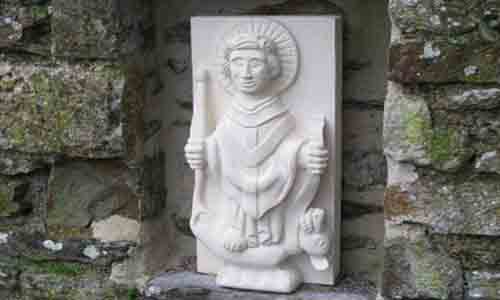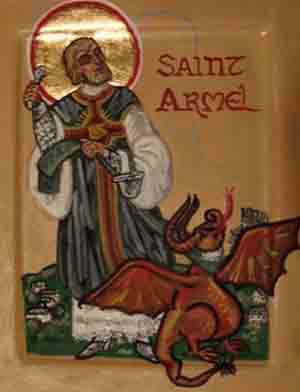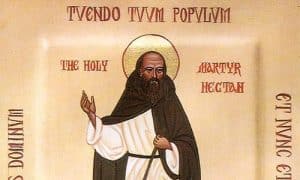JACOB MILNESTEIN tells the story of St Armel, a mysterious saint who slew a dragon and whose name may hint to a greater nobility that many may have once guessed.

Who was St Armel?
Killing a dragon is often a prerequisite of being a solider-saint; the parry of lance or sword against monstrous claws, the hulking weight of a fire-breathing monster crawling through the undergrowth and the unyielding belief that, through Christ, such evil may be overcome.
St Armel, a 6th century saint born on Welsh soil to of noble Breton lineage, is a lesser renowned missionary recorded briefly in an episode detailing his duel with a dragon in the Forest of Teil.
It is said that having been educated in Welsh monasteries, he went on to fight on the side of King Iuthahel of Brittany in AD 555 against marauders and invaders.
So impressed was Iuthahel with the noble fighter that he granted Armel lands in the forest where he was noted and revered for founding a monastery.
Having previously performed miracles of restoration at the court of King Childebert, the soldier-saint soon took orders and settled into holy life.
Yet no sooner had he done so than the monastery and the neighbouring towns found themselves under fire from a rogue dragon.
Not flinching from his duties, St Armel set out into the dark forest and faced off against the dragon, eventually strangling the beast with his vestments and drowning it in a river.
Such is where the fantastical element of St Armel’s story ends… except for one small detail.
Armel was also, prior to accepting holy orders, known as Arthmael, a name which is more commonly translated in modern English as Arthur.
“Armel was also, prior to accepting holy orders, known as Arthmael, a name which is more commonly translated in modern English as Arthur.”
When first the legend of Armel begins we find him all but fully etched in history, a noble man born of a renowned lineage upon familiar shores. We are told little of his education and childhood, save for his piety, and only truly come to know him when he arrives once more in Brittany.
The idea of noble Arthur being carried from the field of Camlann in AD 537, wounded and tormented with grief, only to return to the land not only of his ancestors but also of his estranged comrade, Sir Lancelot, is one rich with nostalgia.Humbled by the healing of his wounds, taking up arms again 18 years following the battle that lost him both a wife and a kingdom, it is comforting to think of a world in which Arthur did not fall into slumber yet somehow persisted.
It is said that, at the end of his years, Armel was visited by an angel who escorted him, like the aged Hebrew patriarchs, to Heaven so that he may forever reside in the Kingdom of God
Such a story, as fanciful as it might be, offers us a fitting place of final rest for a man who may once have been both king and servant.
JACOB MILNESTEIN writes stories. His most recent story, “lecteur de tarot” can be found here.






